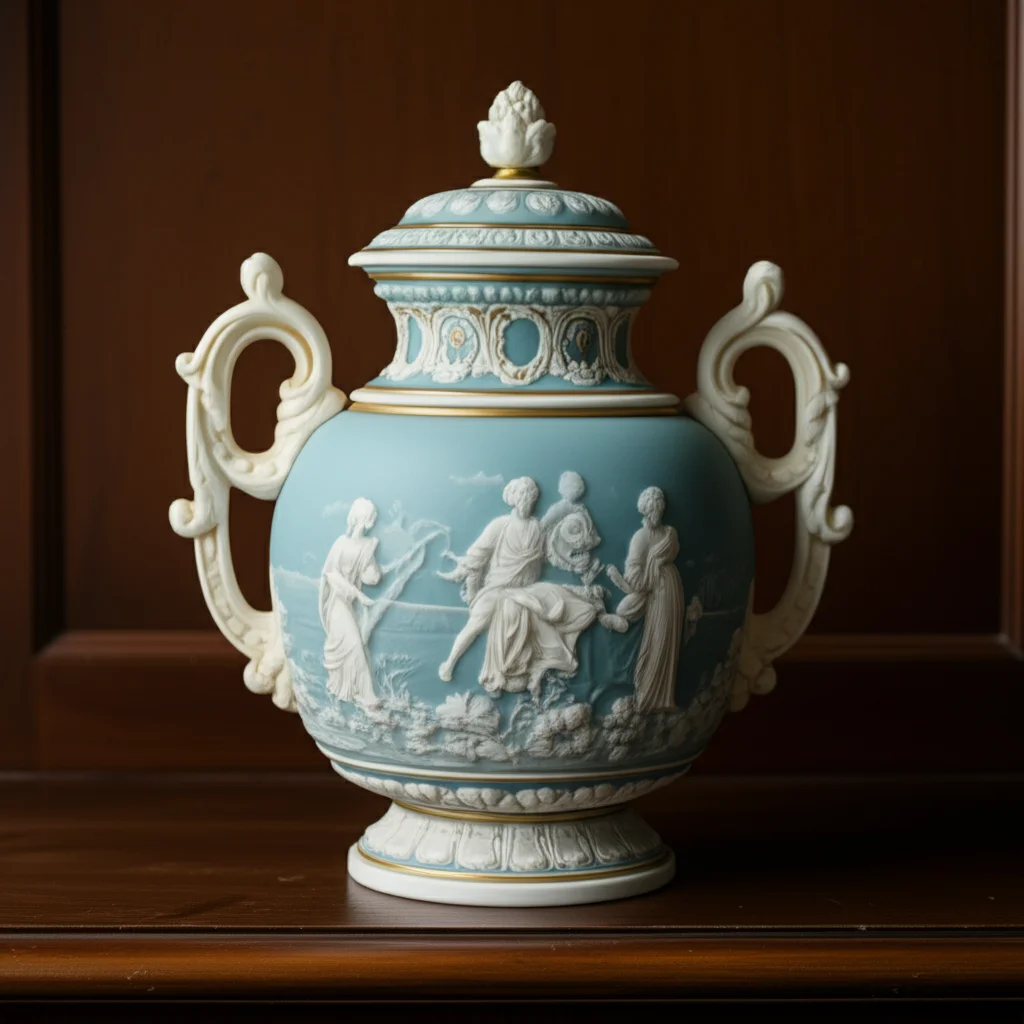· Todd Martin · Home Care · 13 min read
How To Clean Porcelain Figurines

How To Clean Porcelain Figurines Safely and Effectively
Do you own beautiful porcelain figurines? These delicate pieces add charm and elegance to any home. Over time, however, porcelain figurines can gather dust, dirt, and even develop stains. Proper cleaning is important to keep them looking their best.
This guide will show you how to clean porcelain figurines carefully. We will cover gentle dusting methods and effective stain removal. You will also learn about the right tools and products to use. I will also share tips for protecting your precious items.
Takeaway
- Use soft tools like brushes and microfiber cloths for dusting.
- Always use distilled water and mild, pH-neutral soap for wet cleaning.
- Test any cleaning method on an inconspicuous area first.
- Avoid harsh chemicals, abrasives, and extreme temperatures.
- Handle figurines by their base to prevent damage.
To clean porcelain figurines, gently dust with a soft brush, then wipe with a damp, lint-free cloth using mild soap. For stubborn grime, use distilled water and a cotton swab. Avoid harsh chemicals and abrasive tools to protect delicate details and finishes.
Understanding Your Porcelain Figurine: Types and Delicacy
Porcelain figurines come in many forms. They can be modern pieces or valuable antiques. Knowing your figurine’s type helps you clean it correctly. Different finishes and materials need different care.
Some figurines have a glazed finish. This smooth, shiny surface is generally easier to clean. It resists dirt better than unglazed areas. Unglazed porcelain, also known as bisque porcelain, has a matte, porous finish. This type can absorb dirt and stains more easily. It requires very gentle handling.
Many figurines feature delicate painted details. Some may have gold leaf or other metallic accents. These decorations are very fragile. Strong rubbing or harsh chemicals can easily damage them. Always check your figurine for any signs of repair. Previously repaired areas are often weaker. They might break again with too much pressure.
Knowing these characteristics is the first step. It helps you choose the safest cleaning method. My own collection includes both glazed and bisque pieces. I always approach them differently.
Essential Cleaning Tools and Supplies for Figurines
Having the right tools makes the cleaning process safe and effective. You do not need many items. The key is to choose soft and gentle materials. Harsh brushes or abrasive cloths can scratch the porcelain.
Here is a list of supplies I recommend:
- Soft-bristled brush: A soft makeup brush or a clean paintbrush works well. These are perfect for dusting delicate areas. They can reach small crevices without scratching.
- Microfiber cloths: These cloths are very absorbent and lint-free. They are excellent for drying and wiping surfaces. Make sure they are clean before use.
- Cotton swabs or Q-tips: These are essential for spot cleaning. They help you target small, dirty areas precisely. You can clean intricate details safely.
- Distilled water: Tap water contains minerals that can leave spots or film. Distilled water is pure and leaves no residue. It is important for a streak-free finish.
- Mild, pH-neutral soap: A gentle dish soap without dyes or perfumes is ideal. Baby shampoo is another good option. Avoid strong detergents or abrasive cleaners. These can strip finishes or damage paint.
- Small bowl: You will need a small container for your cleaning solution.
- Soft, stable drying surface: A towel or soft pad ensures your figurine is safe while drying.
I keep all these items together in a cleaning kit. This way, everything is ready when I decide to clean my porcelain figurines. Using the right tools ensures I can clean effectively without causing harm.
Gentle Dusting Techniques for Porcelain Figurines
Regular dusting prevents dirt buildup. This is the simplest way to maintain your figurines. Dusting often reduces the need for deeper cleaning. It also keeps your pieces looking fresh.
Start by placing your figurine on a soft, stable surface. This protects it if you accidentally drop it. A folded towel works well. Next, take your soft-bristled brush. Gently brush away loose dust from the entire surface. Work from top to bottom. Pay attention to all the details and crevices. Do not apply too much pressure. Let the soft bristles do the work.
For more stubborn dust or light grime, use a soft, dry microfiber cloth. Carefully wipe the surface. If your figurine has intricate parts, use cotton swabs. Dry cotton swabs can pick up dust from tight spots. I always dust my collection once a week. This routine saves me a lot of effort in the long run.
Sometimes, dust sticks to the surface more firmly. This happens often if there is a lot of humidity. For these areas, lightly dampen a clean microfiber cloth with distilled water. Wring it out very well. The cloth should be barely damp. Gently wipe the dusty areas. Dry immediately with a fresh, dry microfiber cloth. This prevents water spots. Remember, consistency in dusting is key for maintaining the beauty of your porcelain figurines.
Deep Cleaning Porcelain Figurines: Tackling Grime and Stains
Sometimes, dusting is not enough. Your porcelain figurines might have sticky grime or actual stains. Deep cleaning requires a bit more care. This method uses a mild cleaning solution.
First, gather your supplies: distilled water, mild pH-neutral soap, cotton swabs, and clean microfiber cloths. Mix a few drops of soap into a small bowl of distilled water. The solution should be very mild. Dampen a clean cotton swab or the corner of a microfiber cloth in the solution. Wring out any excess liquid. The swab or cloth should be damp, not wet.
Gently dab or wipe the soiled area. Work in small sections. Do not rub aggressively. For stubborn spots, you might need to repeat this step a few times. If you are dealing with a stained porcelain surface, you might consider how stains are addressed on other porcelain items. For example, how to clean a stained porcelain sink often involves a similar gentle approach, though the scale is much larger. Rinse the cleaned area by dabbing it with a fresh cotton swab or cloth dampened only with distilled water. This removes any soap residue.
Immediately dry the area with a clean, dry microfiber cloth. For antique porcelain or very delicate pieces, I prefer to use even less moisture. I ensure the cleaning solution is barely noticeable. This gentle touch prevents any potential damage. Always handle the figurine by its base. This keeps stress off fragile parts.
Special Considerations for Antique and Damaged Figurines
Cleaning antique porcelain figurines requires extra caution. These pieces are often more fragile. They might have invisible cracks or weakened areas. Their paint might be less stable.
Before cleaning an antique, examine it closely. Look for cracks, chips, or areas where paint is flaking. If you find any damage, avoid wet cleaning entirely. Dusting with a very soft brush is the safest option. For very old pieces, their original glazes might be different. They might react unexpectedly to moisture. For example, cleaning an old porcelain tub involves understanding its age and potential fragility, much like a figurine. You can find more on this at how to clean an old porcelain tub.
If the figurine has been repaired, be extremely gentle around the repair sites. Adhesives used for repairs can dissolve or weaken with water or cleaning solutions. These areas are prone to breaking again. I learned this the hard way with a beloved family heirloom. Now I always treat repaired sections with the utmost care.
For valuable antiques, consult a professional conservator. They specialize in restoring and cleaning delicate artifacts. They have the knowledge and tools to clean without causing harm. It is always better to be safe than sorry. Do not risk damaging a priceless piece. Remember, minimal intervention is often the best approach for very old or fragile items.
Drying and Polishing Your Porcelain Figurines
Proper drying is as important as cleaning. Any moisture left on the surface can lead to water spots. It can also encourage mildew growth in unglazed areas. A clean, dry finish enhances your figurine’s beauty.
After wet cleaning, immediately blot the figurine with a clean, dry microfiber cloth. Gently pat the surface. Do not rub vigorously. For intricate details, use a dry cotton swab to absorb moisture. Make sure all crevices and undercuts are completely dry. You can allow the figurine to air dry for a short period in a dust-free area. I often place them on a soft, clean towel. This provides a stable and absorbent surface.
Do not use heat to dry your figurines. Hairdryers or direct sunlight can cause sudden temperature changes. This can lead to cracking or warping, especially in older porcelain. It can also damage painted details. Allow them to dry naturally at room temperature. Once fully dry, your porcelain figurine should look clean and bright. There is generally no need for special polishing. The natural luster of clean porcelain is beautiful on its own.
A common comparison can be drawn to cleaning a toilet. While a toilet bowl is a robust porcelain surface that tolerates stronger cleaners, the principle of proper drying after cleaning is universal to prevent water marks or mildew. You can read more about it here: how to clean a porcelain toilet. My goal is always to restore the figurine’s original shine. This process ensures no streaks or spots remain.
Preventative Care and Display Tips for Longevity
Cleaning is important, but preventing dirt buildup is even better. Good display habits protect your porcelain figurines. They help them last for many years.
Here are some tips for preventative care:
- Display in enclosed cases: Glass display cabinets protect figurines from dust. They also shield them from environmental pollutants. This significantly reduces the need for frequent deep cleaning.
- Avoid direct sunlight: Sunlight can fade painted details over time. It can also cause the porcelain to yellow. Position your figurines away from windows.
- Maintain stable temperatures and humidity: Extreme fluctuations can cause porcelain to expand and contract. This can lead to cracks. Keep your display area at a consistent room temperature.
- Handle carefully: Always pick up figurines by their sturdy base. Avoid grasping delicate parts like arms or wings. These parts are very fragile.
- Dust regularly: As mentioned before, consistent gentle dusting is your best defense against dirt buildup. This simple routine keeps your figurines looking fresh.
- Keep away from active cooking areas: Grease and smoke from kitchens can deposit a sticky film on surfaces. This film attracts dust and can be hard to remove.
- Place on stable surfaces: Ensure your display shelf or table is sturdy. Vibrations or accidental bumps can cause figurines to fall.
By following these preventative measures, you extend the life of your porcelain figurines. I have a dedicated display cabinet for my most cherished pieces. This makes a huge difference in their upkeep.
What Not to Do When Cleaning Porcelain Figurines
Knowing what to avoid is as crucial as knowing what to do. Using the wrong methods or products can cause irreversible damage. Porcelain figurines are not like durable porcelain tiles. Cleaning ceramic tiles, for instance, might involve more aggressive scrubbing. You can learn more about how to clean porcelain tile at how to clean porcelain tile, but remember, figurines are much more delicate.
Here are things you should absolutely avoid:
- Do not use abrasive cleaners: Scouring powders, rough sponges, or steel wool will scratch the delicate surface. This damage is permanent.
- Do not use harsh chemicals: Ammonia-based cleaners, bleach, or strong acids like vinegar can strip paint or dull the glaze. For instance, while vinegar is great for cleaning a shower, it is too harsh for delicate porcelain. Check out how to clean a shower with vinegar for a proper application of this cleaner. These chemicals can also damage any repairs.
- Never put them in a dishwasher: Dishwashers are too rough. The high heat and strong detergents will almost certainly break or damage your figurines.
- Do not soak figurines: Prolonged exposure to water, especially for unglazed or antique pieces, can weaken the material or dissolve adhesives.
- Avoid excessive scrubbing: Even with gentle cleaners, too much rubbing can wear away painted details. Use a light touch.
- Do not use a hairdryer or direct heat for drying: Sudden temperature changes can cause cracks.
- Do not use furniture polish or wax: These products are not designed for porcelain. They can leave a sticky residue that attracts more dust.
I always double-check my cleaning supplies. Making sure I have only the gentle options ensures I never make these mistakes. Your figurines deserve the safest care.
Frequently Asked Questions About Cleaning Porcelain Figurines
Can I use soap and water to clean porcelain figurines?
Yes, you can use soap and water. It is important to use a very mild, pH-neutral soap. Mix a few drops of soap into distilled water. Use a damp cloth or cotton swab, not a wet one. Make sure to rinse thoroughly with plain distilled water. Then, dry the figurine completely. This prevents water spots and soap residue.
How do I remove yellowing from old porcelain figurines?
Yellowing in old porcelain is often due to aging of the material itself or a build-up of old dirt and smoke residue. For surface yellowing, gentle cleaning with mild soap and distilled water can help. For true material yellowing, there is little you can do at home without risking damage. Avoid harsh bleaching agents; they can damage the glaze. Consult a professional conservator for valuable pieces.
What should I avoid when cleaning porcelain?
Avoid abrasive cleaners like scouring powders or rough sponges. Do not use harsh chemicals such as bleach, ammonia, or strong acids like vinegar. Never put porcelain figurines in a dishwasher. Avoid soaking them in water for long periods. Do not use hot water or sudden temperature changes for drying.
How often should I clean my porcelain figurines?
For light dust, a weekly or bi-weekly gentle dusting is ideal. This prevents buildup. Deep cleaning is only needed when you notice visible grime, sticky residue, or stains. This might be once every few months or even once a year, depending on your display environment. Regular dusting minimizes the need for deeper cleans.
Can I use a dishwasher for porcelain figurines?
No, you should never use a dishwasher for porcelain figurines. The high heat and strong detergents in dishwashers can cause porcelain to crack, chip, or break. The force of the water jets can also knock over and damage delicate pieces. Hand washing with care is always the safest method.
What if my figurine has gold leaf or painted details?
Gold leaf and painted details are very delicate. Use extra caution around these areas. Avoid any scrubbing. Use only a barely damp cotton swab with very mild soap solution. Gently dab the area. Do not rub. Rinse and dry immediately. Harsh chemicals can easily strip these decorative elements. If in doubt, only dust these sections.
Conclusion
Cleaning porcelain figurines requires a gentle touch and the right approach. These cherished items add beauty to your home. Taking care of them ensures they remain a joy for years to come. Remember to always use soft tools and mild cleaners. Distilled water is your friend for streak-free results.
Regular dusting prevents heavy dirt buildup. For deeper grime, a mild soap and water solution works wonders. Always check for delicate areas, especially on antique pieces. Handle your porcelain figurines by their sturdy base. This simple act prevents accidental damage. By following these steps, you can safely clean porcelain figurines. You will preserve their delicate beauty. Start your cleaning routine today. Your beautiful figurines will thank you for it.





